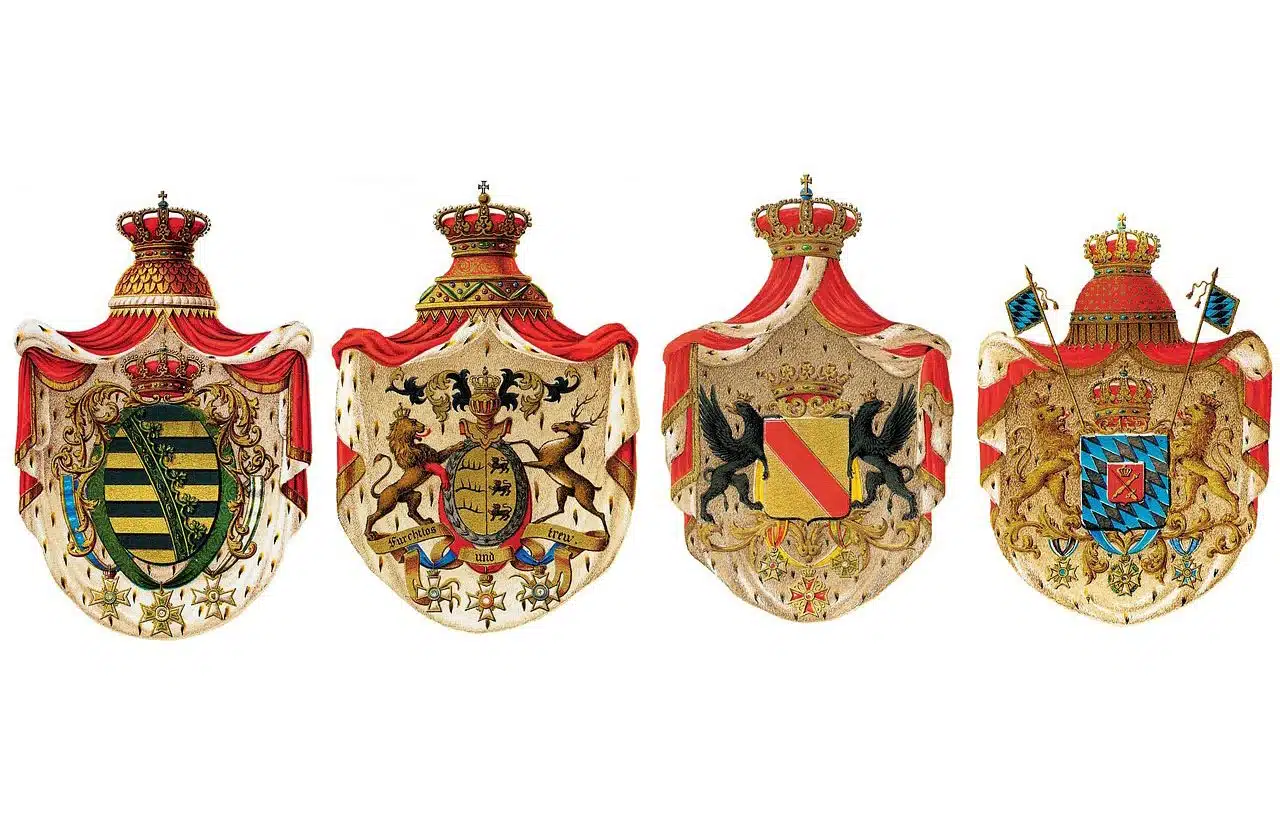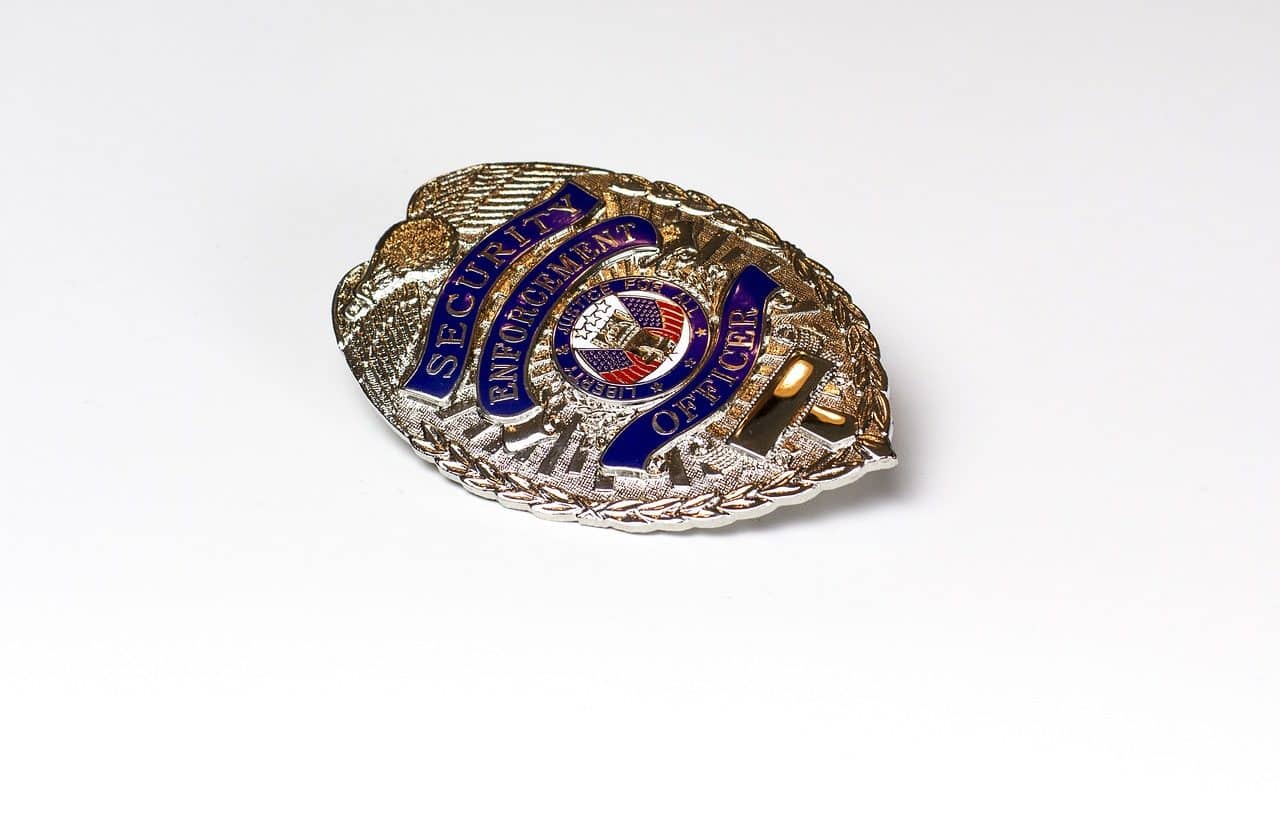
Coats of arms identified the lineage, belongings and achievements of nobles.
A badge is a symbol, emblem or badge used to represent an identity, rank, achievement, affiliation or membership in a specific group or organization. Insignia are often worn on clothing, such as uniforms, or displayed on objects such as badges or flags. They can have varying shapes, colors, and designs depending on the purpose for which they are used, and are often used in military, government, sporting, educational, or corporate contexts to distinguish people based on certain criteria.
History and evolution
Badges have a long history dating back to ancient civilizations, where they were used as symbols of status, tribal affiliation, or authority. In the ancient cultures of Egypt, Mesopotamia, and China , for example, leaders and warriors wore distinctive insignia in the form of amulets , seals, or emblems embroidered on their clothing to show their position in society or their membership in a specific group.
During the Middle Ages, the use of insignia became widespread, especially in Europe, where heraldry played a crucial role. Heraldry was a system of designing and regulating coats of arms and blazons , which were distinctive visual emblems used by nobility and aristocracy to identify their lineage, possessions, and military achievements. Each noble family had its own unique blazon and coat of arms, composed of specific colors, figures and symbols that conveyed its history and status.
Badges were not only used to identify individuals or families, but also played an important role in battles and ceremonial events . Knights carried their coats of arms in battle to identify friends and enemies, and banners and flags with heraldic emblems were displayed to inspire troops and demonstrate loyalty to a feudal lord or nation.
In addition to their military use, the insignia were used in ceremonial events, such as tournaments, jousts, and royal processions, where the colors and symbols were proudly displayed to represent the glory and honor of the noble houses. Over time, its use spread to other areas of society, such as education, religion, commerce, and administration. Today, badges continue to be used in a wide variety of contexts to represent identities , achievements, affiliations and authority, thus maintaining a tradition that dates back centuries.
Classification
- Olympic Badge – An official badge used at the Olympic Games to identify athletes, coaches, referees and other participants. It may include the official logo or representative symbols of the host country;
- rank insignia – used in the military and other hierarchical organizations to indicate an individual's level of authority or position within the command structure. Sometimes it includes stars, bars, chevrons, or other symbols representing rank level;
- identification badge – identifies a particular person, group, or entity. It may display names, identification numbers, barcodes or other elements that allow rapid and accurate identification ;
- commemorative badge – designed to commemorate a notable event, achievement, or person. Some have dates, names, commemorative symbols or other elements that remember and honor the object of the commemoration ;
- function badge – denotes the specific function or role of an individual within an organization or group. It may include symbols that represent particular tasks or responsibilities;
- pilot badge – used by airplane or helicopter pilots to identify their level of experience, type of aircraft they are authorized to fly, or special achievements in aviation. Certain symbols associated with aviation are common, such as wings, stars and bars;
- group insignia – Identifies affiliation with a specific group, such as a military unit, sports team, or community organization. It is not uncommon for it to include the group's logo or emblem, as well as other elements that reflect its identity and purpose;
- professional badge – Highlights an individual's profession, field of expertise, or level of proficiency in a specific area. Sometimes it has symbols, letters, colors or other elements that represent the profession or industry in question.

The badge can be an emblem used by organizations such as the police to identify their campus.
emblems
- National emblem : an officially recognized symbol or graphic representation of a nation, such as a flag, coat of arms, or national seal, which is often used to identify and represent the country both nationally and internationally;
- military emblem : visual distinctive used by the armed forces to identify the rank, unit, specialty, and achievements of its members. May include rank insignia, unit patches, and decoration medals;
- school emblem – used by an educational institution to represent its identity and values, sometimes with a coat of arms, logo or motto reflecting the institution's mission and history;
- fraternity emblem – used by a fraternal or sororal organization to identify its members and represent its ideals and traditions. Some include Greek letters, specific colors, and other symbolic elements associated with the fraternity or sorority in question;
- club emblem – used by a club, association or social group to represent its identity and purposes. It usually has a logo, a crest or any other design that reflects the interests and activities of the club;
- security emblem – used by security organizations, such as the police, private security services or related government agencies, to identify their personnel, vehicles or facilities. Typically includes a distinctive logo, patch or badge;
- organization emblem – used by a company, institution or organizational entity to represent its corporate identity and values. It may include a logo, a graphic emblem, or a combination of visual elements that identify the organization.

An important role of the badge is to generate consumer trust.
Perception and confidence
Badges play a critical role in shaping public perception by representing identities, values and achievements. These visual symbols not only help identify a brand, institution or individual, but they also influence the way they are perceived by the public.
In the field of brands and organizations, badges are key elements to build loyalty and recognition . A well-designed badge can create an emotional connection with the public, generating trust and fostering loyalty to the brand or institution. For example, a company's iconic logo can evoke positive associations, such as quality, reliability or innovation, influencing the purchasing decision and consumer preference.
Additionally, badges also play a crucial role in building trust . They act as seals of authenticity and credibility, providing a visual guarantee of the quality, authority or prestige of an entity. For example, certification or accreditation badges on products or services can convey confidence to the consumer by demonstrating compliance with recognized standards.
In summary, badges have a significant impact on public perception by influencing loyalty to the brand or institution and playing a key role in building trust. Thoughtful and meaningful design can strengthen an entity's identity and establish lasting connections with its target audience.
